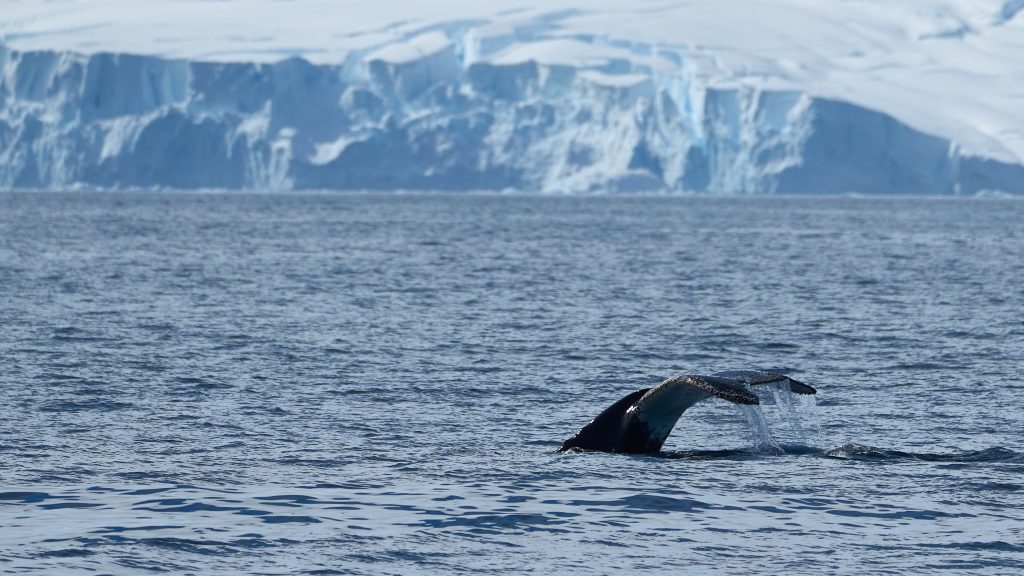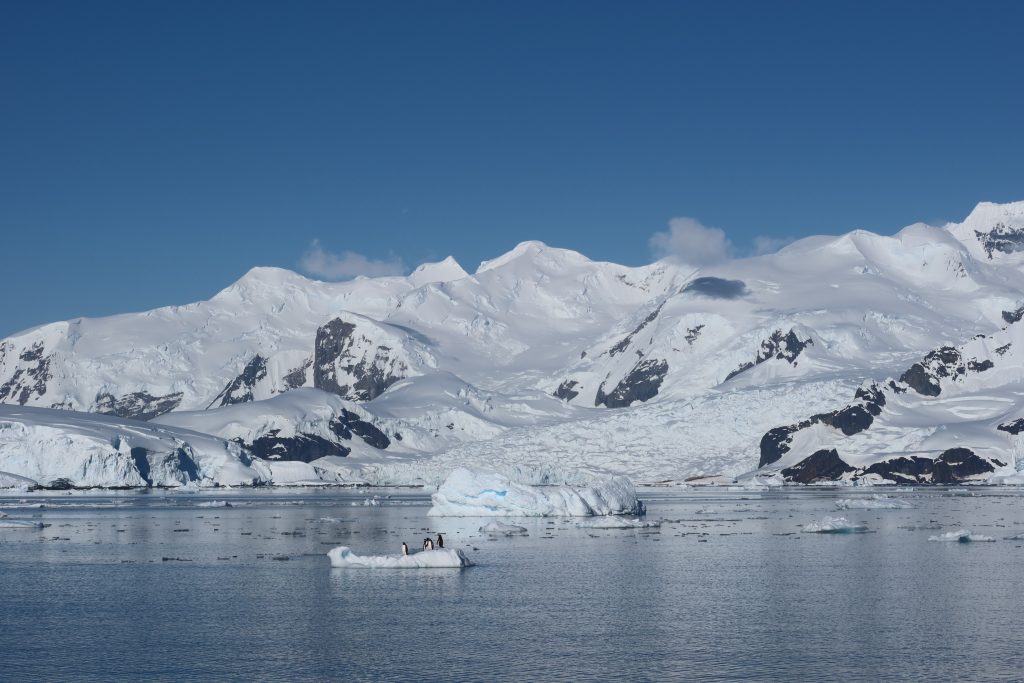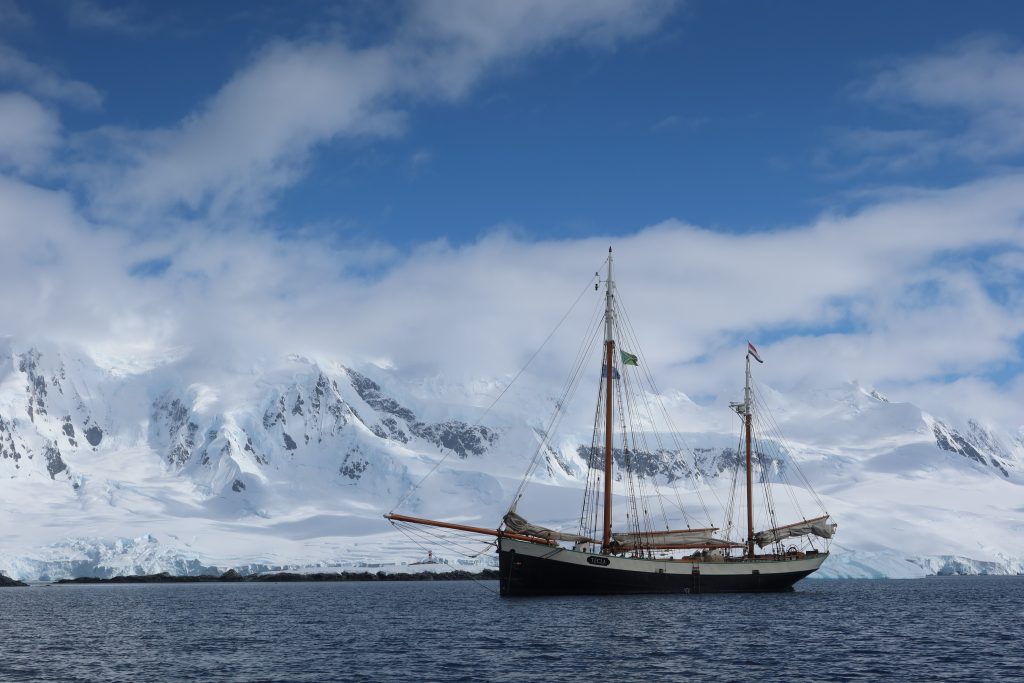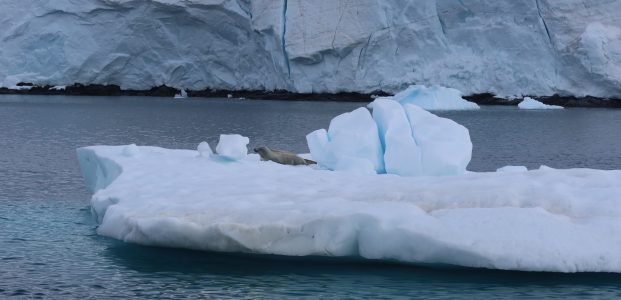Today was a day of further visual overload punctuated by whales. We started after breakfast springing off the wreck of the Governoren. The main challenge with this was flicking the ropes off the various metal protrusions we had been attached to. Once again the crew embraced their inner cowboy and slickly flicked the lines off on cue. We left, leaving behind the other boat which had arrived during the previous evening and tied to the other side of the wreck. They were preparing skis and looked like they were heading off cross country to explore. We headed south down the Gerlache Strait. The weather was overcast with the cloud below the peaks, but this lent the scenery an air of mystery, of detail yet to be revealed but with enough to nevertheless amaze.
Humpback whales were regular companions, sometimes close but always immediately engaging. However often we see them, their appeal does not diminish. The sight of the white flukes disappearing as they dive is perhaps one of natures iconic views. Later in the morning though, as we were having coffee, came the ‘whale signal’. This is the engine being slowed down and then revved a couple of times and this brought us all straight out as the skipper stopped the engine. This time it was orcas – killer whales, or more correctly killer dolphins as they are the largest member of the dolphin family! They were stunning – a word that is easy to overuse, but completely appropriate in this case. They were in a playful mood and there seemed to be two pods, one with two or perhaps three calves. There were also two males. They are clear from their much larger dorsal fin – a clear statement of masculinity. It seems to give status, but has no practical purpose. How very male! Their playfulness gave us views of tail slapping, a quick spyhopping display from one male and lots of rolling around in the water. A truly memorable display from one of the most powerful marine killing machines. The ones we saw were actually Type B orcas which are slightly smaller than the traditional orca, but are identifiable from their slightly yellow or brown patches, rather than the white we usually associate with them. This is apparently caused by them absorbing diatoms in the water, giving them this mottled yellow appearance.

Halfway down the strait we headed west and then round to the southwest to go through the channel between Anvers Island and Wiencke Island dodging icebergs as we turned. We headed past glacier after glacier, occasionally feeling them as well as seeing them as the katabatic winds delivered a chilling blow. The scenery was once again difficult to associate with any adjectives other than awesome or stunning, though it is more difficult to know what was going through the minds of the explorers who originally discovered Anvers Island. Many of the peaks and topographical features are named after characters from Greek myths and legends. There is Zeus Ridge, Menelaus Ridge, Hector Peak, Achilles Peak and perhaps most appropriately, a saddle in between two peaks is named Achilles Heel!

In this channel we got lots more humpback whale sightings. They are becoming increasingly common, but no less captivating for that. Around 6pm we arrived in Port Lockroy and anchored in the bay behind the Port Lockroy station. No ice watch required tonight as we are well protected from the wind and current and so should stay ice free for the night without us checking.


